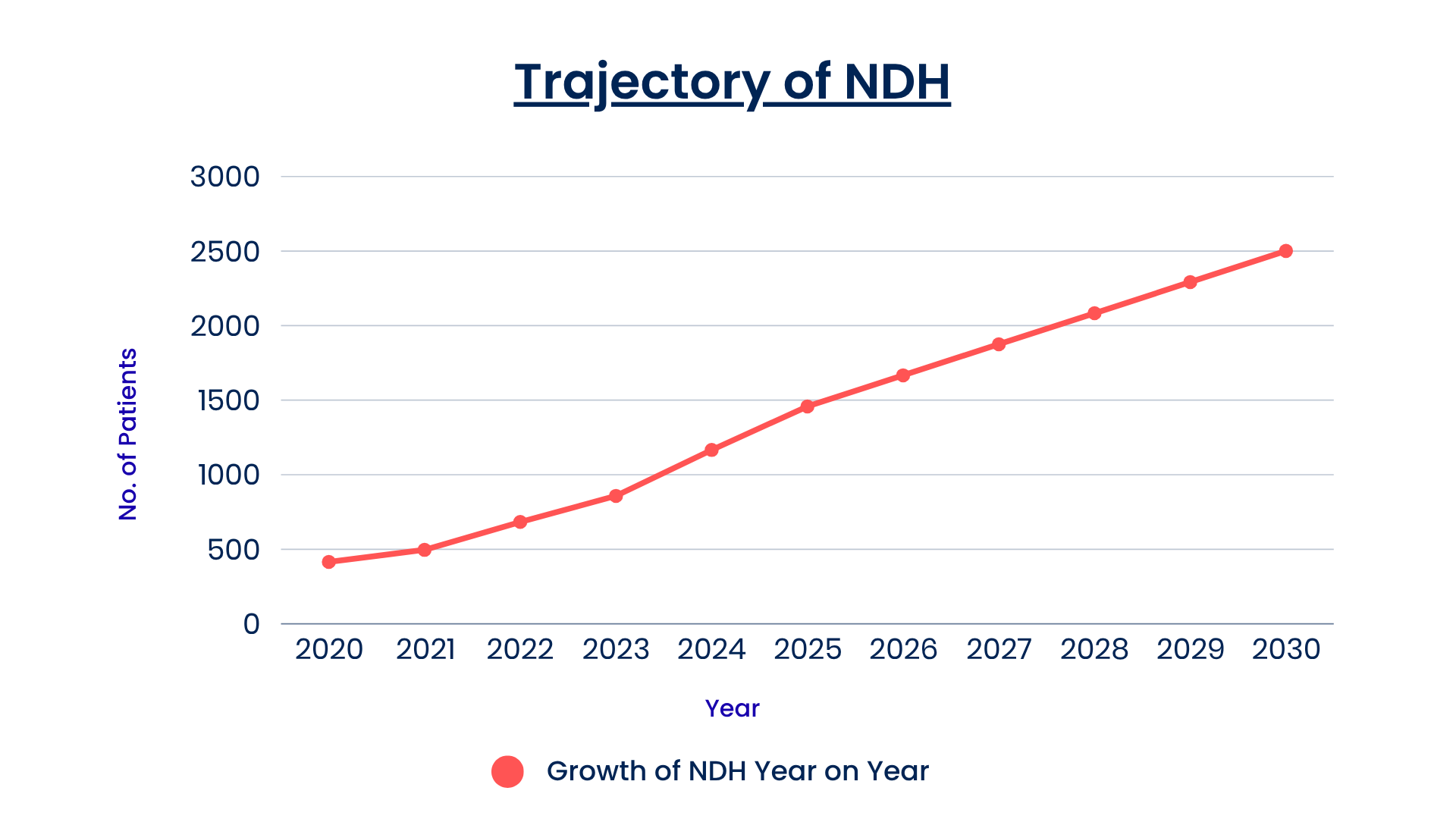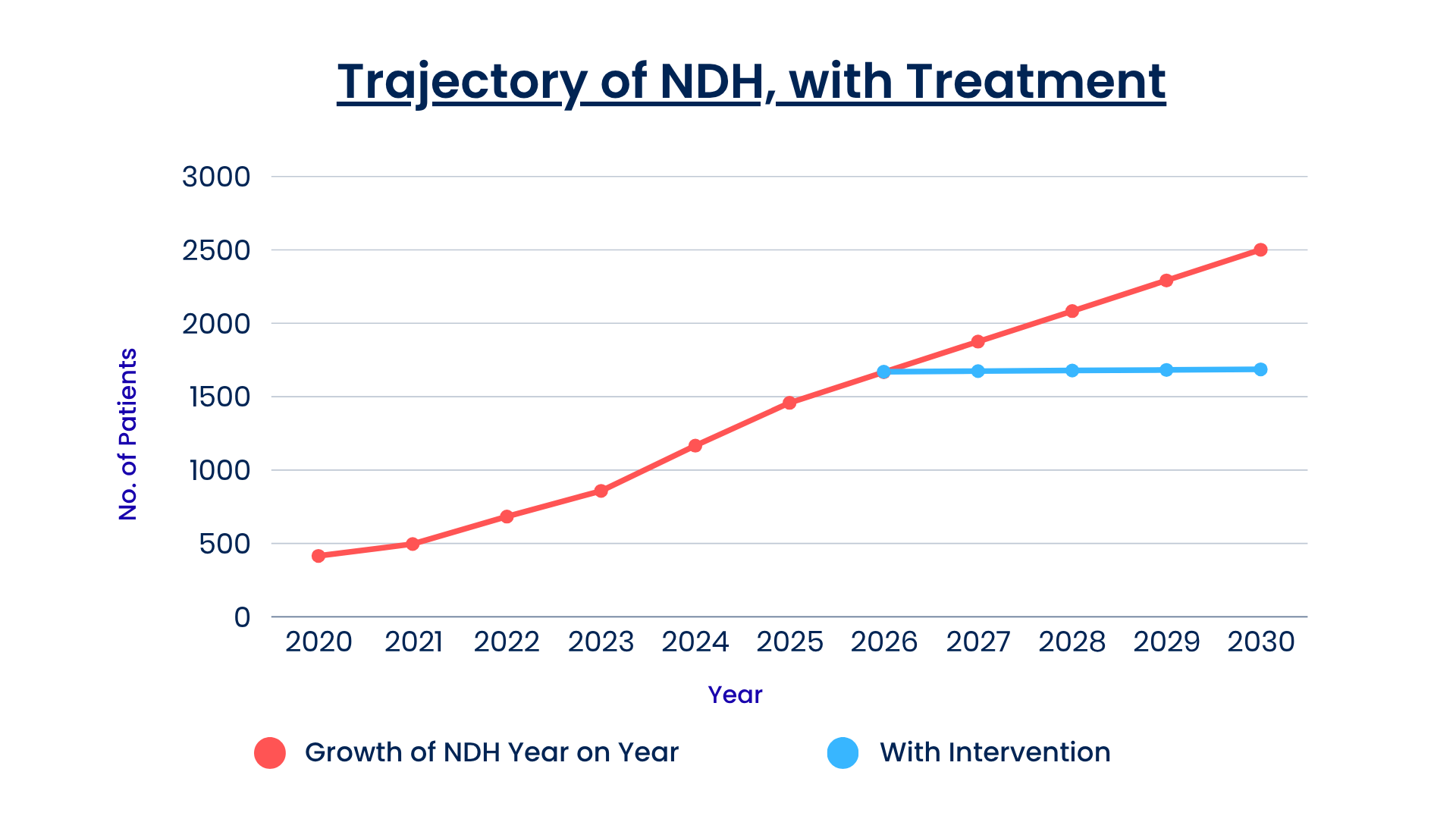A Blueprint for Bending the Curve on NDH and Type 2 Diabetes
We at RediCare believe the only possible solution to bending the curve on chronic disease such as Type 2 Diabetes, NDH, Obesity, PCOS and NAFLD, is to deploy a Lifestyle Therapy and Behavioural Change support at a large population level. This type of large population approach needs to be delivered at very low unit treatment costs.
How RediCare's Large Population Approach can Bend The Curve
Lifestyle Therapy and Behavioural Change are clinically effective and proven in preventing and treating chronic conditions. A lifestyle therapy is the only treatment that addresses root cause.
The key challenges:
- To date the unit economic of lifestyle therapy has been deemed too expensive to be offered to all patients with a need.
- The technology and delivery modalities were not scalable to treat the millions of patients with a need
- Treatments were largely point solutions and not delivered in an integrated way or connected with usual care
- Not enough emphasis or focus on prevention and treatment at the point of diagnosis and care delivery
Characteristics of a Large Population Approach to Bend the Curve
Integrated Delivery Approach
Delivered in Neighbourhood Team Setting
Measurable Outcomes and ROI Targets
Treatment Offered to all Patients
Focus on Prevention and Supporting Newly Diagnosed Patients
Patients Supported in Perpetuity
Low Unit Treatment Economics
Reducing Social Inequalities and Capacity Limits

What Does Bending the Curve Look Like?
Take a practical example of using a Large Population Approach to bend the curve on a single chronic condition, in this case, Non-Diabetic Hyperglycaemia (NDH) within a RediCare-supported practice of approximately 17,000 registered patients
Practice Profile:
- The practice has 17,078 patients on its registered list, which is growing at c.1.5% per annum.
- The practice currently has 1458 patients with NDH, up from 415 in 2020.
- The practice is identifying ~1 new person with NDH every working day.
- Based on the last 5-year average of new cases of NDH per annum, the prevalence of NDH is projected to grow to 2501 patients with NDH by 2030.

What Does It Take To Bend this Curve?
Bending the Curve on NDH patient trajectory, requires intervention on three cohorts:
- Treating the existing patients who have NDH (50% curve bend power)
- Treating newly diagnosed NDH patients (10% curve bend power)
- Preventing the patients who are at risk of developing NDH (remaining 40% curve bend power)
RediCare has real world evidence on cohort 1 and 2 above. We are currently evaluating cohort 3, which is a large population approach. To successfully Bend the Curve, c. 1% of the population in cohort 3 needs to be prevented from progressing to developing NDH.

NDH Clinical Outcomes
Unit Economics
Primary Care Paper

Effectiveness of an Integrated Digital Service for Treating and Preventing Chronic Diseases in Primary Care:
A Neighbourhood Teams Approach to Cost-Efficiency and Health Outcomes
View Case Study
Join Us on Our Mission using Large Population Approach to Bend the Curve on Chronic Disease
The Darzi Review, Fuller Stocktake, and NHS People Plan all stress the need for urgent action on staff wellbeing to sustain the NHS and safeguard patient care.